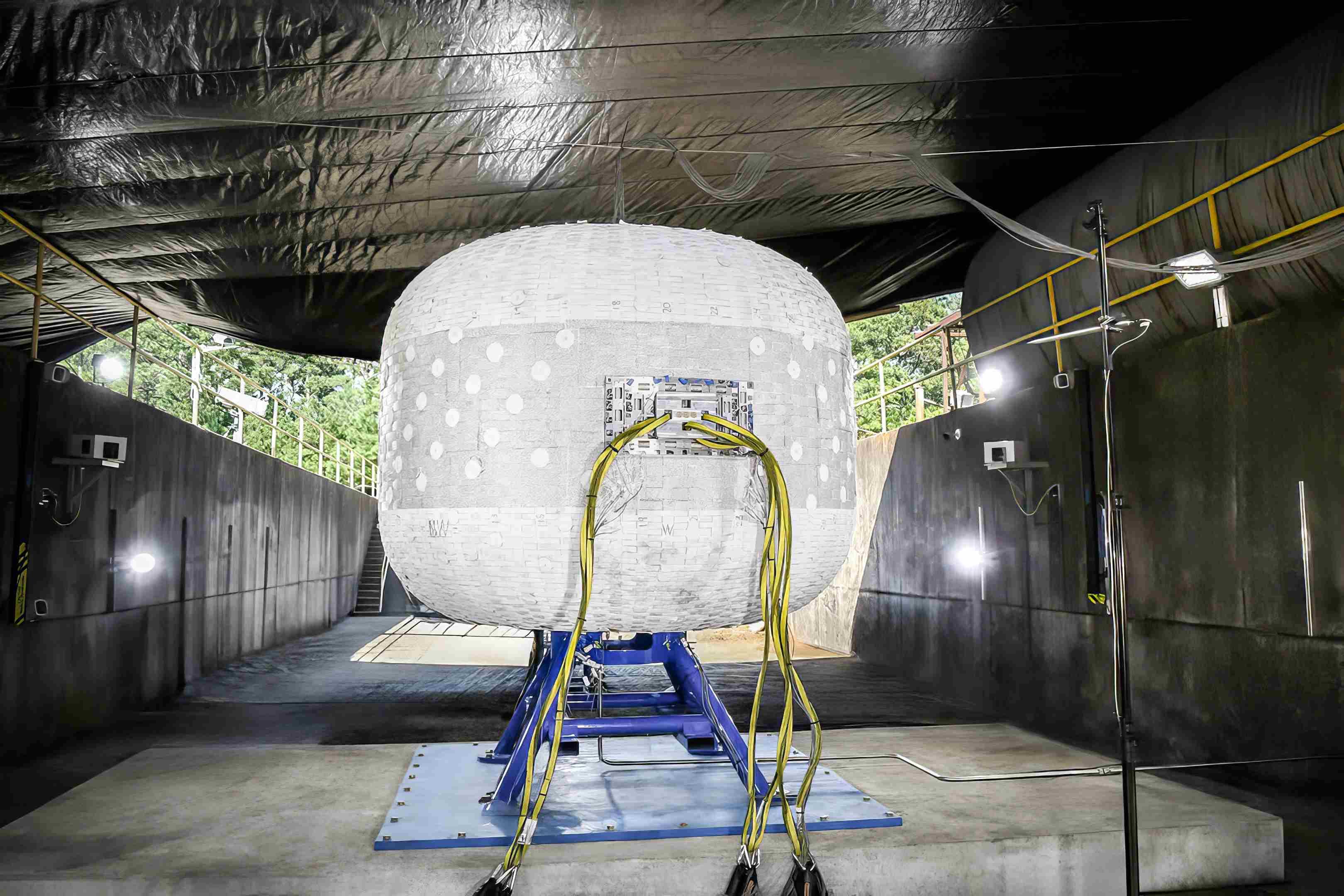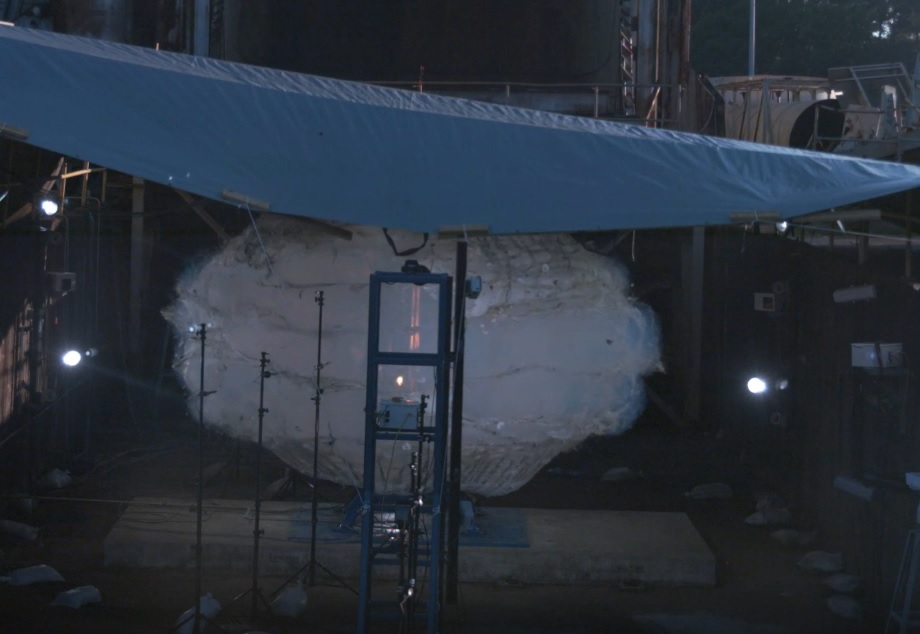Sierra LIFE Inflatable Habitat Burst-Tested With Representative Window

Sierra Space has been conducting tests on a sub-scale version of its LIFE inflatable habitat.
COLORADO SPRINGS—Sierra Space has successfully completed a burst pressure test on a scaled version of its LIFE (large integrated flexible environment) inflatable habitat fitted for the first time with a metallic window structure.
The test, conducted with soft goods partner ILC Dover and NASA at the agency’s Marshall Space Flight Center, Alabama, marks a key milestone in Sierra’s plan to deploy LIFE modules in Earth orbit and cislunar space later this decade.
Culminating with structural failure at 242 pound per square inch (psi)—33% over the certification standard—the ultimate burst pressure test clears the way for evaluation of the first full-scale LIFE module by the end of the year.
“It's really the next evolution in the LIFE product line,” says Shawn Buckley, senior director of engineering and product evolution for Sierra Space Destinations. “It is taking the soft goods that we've been working on and infusing a hard structure inside the soft goods or textiles. It’s also our fifth successful test in a row,” he adds, referencing a series of increasingly rigorous pressurized burst and creep tests.
For burst-testing, the scaled habitat is filled with air until it ruptures, and the terminal pressure assessed. In creep testing the article is inflated to a constant pressure and then tested to measure how long it can hold the pressure. The materials under test are sewn and woven fabrics, primarily Vectran, which become rigid structures when pressurized. The latest test was the first in which a metal blanking plate structure had been integrated into the fabric.

“Infusing a blanking plate in there gives us the ability to put a window inside the structure and also to attach antennas or anything external to the habitat. It really provides that hard mount surface area without damaging or affecting our overall discriminator which is that expansive soft goods structure,” Buckley says.
“We call it a blanking plate because it's blank—there's no details on it. But it mimics the flight interface, and that’s key for our development of the strap interface to the metallic structure,” Buckley explains. “It’s ‘flight-like’ which means it is going to follow the same departure angles, the geometry and the interfaces, and that's critical. So, we can take that test data and move into the next evolution of this which is full scale testing towards the end of this year, with two blanking plates inside a full-scale life habitat.”
The plate in the test was in the side of the cylinder or toroidal section where the surfaces are least curved. The stiff metallic unit is tied into the fabric with straps that attach to a series of pins. “We have to take into consideration the stiffness of the blanking plate and then the elasticity or creep of the Vectran straps,” he adds.
To qualify for human occupation the habitat must demonstrate the capability to take pressures up to 60.8 psi, or four times the maximum internal pressure of the International Space Station at 15.2 psi.
“Then you have to demonstrate that your flight article will meet or exceed that. An additional caveat is that—because we're a third scale—we multiply it by three and that gives us 182.4 psi. We have to demonstrate that every test we do can meet or exceed that pressure,” Buckley says.
The sub-scale LIFE test unit has around a 12 m3 (324 ft.3) capacity while the full-scale LIFE 1.0 article will encompass around 285 m3. “We must demonstrate that at full scale we can burst this beyond 60.8 psi. That is a lot of work for the team to put it through. The great news is our recent test demonstrated that by inserting a blanking plate into the architecture we were able to improve our design by over 20% from our previous tests, which was amazing. And we're going into full-scale testing with a 33% margin,” he says.
Sierra Space plans to conduct a demonstration mission and deployment of the LIFE 1.0 module in low Earth orbit (LEO) by late 2025 or early 2026 using a ULA Vulcan 5-m (16-ft.) fairing for launch. Follow-on versions will include the 600 m3 LIFE 2.0, which will also launch inside a 5-m fairing, and the 1,440 m3 LIFE 3.0 variant, which will be enclosed within a 7-m fairing. The LIFE 2.0 variant will be 12 m long and 9 m in diameter, while the 3.0 will be over 16 m long and 11-m dia.
